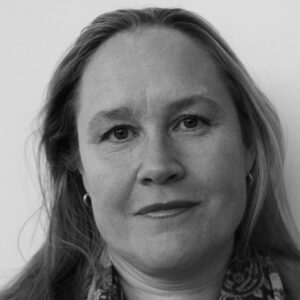The report Gender-based Violence and Sexual Harassment in the Swedish Higher Education Sector, (Genusbaserad utsatthet och sexuella trakasserier i svensk högskolesektor), was published on 20 May. It is based on a questionnaire completed by 38 918 employees, doctoral candidates and students in the Swedish higher education sector. The survey response rate was 32 per cent.
Women more at risk than men
The report, which is part of the Research and Collaboration Programme on Gender-based Violence in Higher Education, shows that four per cent of students and employees had experienced sexual harassment in the past year. Eight per cent had experienced bullying and about 50 per cent rudeness.
It also shows that women are more at risk of sexual harassment than men, that men to a greater extent than women are the ones who subject others to sexual harassment and that young people and students are particularly at risk.
“Now we know something that we had previously suspected, believed and had inferred from other sectors,” says Karin Dahlman-Wright of Karolinska Institutet, who leads the research programme.
A work environment problem
The study’s lead researcher, Christina Björklund, a docent at KI, points out that there is no group in the sector that reports no sexual harassment.
“Different groups experience it to different degrees, but everyone can be subject to sexual harassment and bullying. As such, it’s a work environment problem,” she says.
In addition to questions about their experience of sexual harassment in the past twelve months, the survey asked what kind of unwanted sexual attention respondents had experienced.
In most cases, it was comments about their appearance, unwelcome or unsettling questions about their private life or someone looking at them in an unwelcome or unsettling way. Here, too, women are more at risk.
“The fact that we are now highlighting unwanted behaviour in a report that is available in Swedish and English at higher education institutions provides a good basis for discussion,” says Dahlman-Wright. “You may not have identified these behaviours yourself and they may have become normalized in a workplace.”
Higher education sector stands out
As for those who subject others to harassment, and not least when it comes to bullying, the higher education sector stands out because these people are to a greater extent colleagues and not managers, says Björklund. “In the collegial workplace, there are also hierarchies. We can’t ignore the informal power structures,” she says.
Karin Dahlman-Wright points out that this means that the problem may therefore also need to be tackled in other ways than in the classic line organisation. While the extent of sexual harassment and bullying within the higher education sector is in line with the situation in other sectors in Sweden, higher education stands out as having a high proportion of people who have experienced rudeness in the past year.
About 50 per cent have had managers, colleagues or fellow students who, for example, did not pay attention to what they said or interrupted and talked over them.
“This is very much about how we communicate with each other in different scenarios,” says Christina Björklund. “I know that some higher education institutions have already started discussing things like how we behave towards each other and how we should behave in seminars.”
As a researcher, she is happy that 38 universities were involved in the study and that the sector as a whole showed a clear willingness at the launch seminar to continue working on the basis of the report. She looks forward to digging deeper into the results of her research and sharing the data with other interested researchers.
Can be followed up
The report also took up just a selection of possible issues and may therefore be followed by a new survey.
“We’re now going to sit down and plan what types of other question we can ask about the material and are happy to do so in consultation with the sector,” says Karin Dahlman-Wright. “For example, we have not yet looked at factors such as fixed-term employment and foreign backgrounds.”
She also hopes that the study will be followed up in a few years. “We must use the findings of the report, implement change and then measure again.”

















